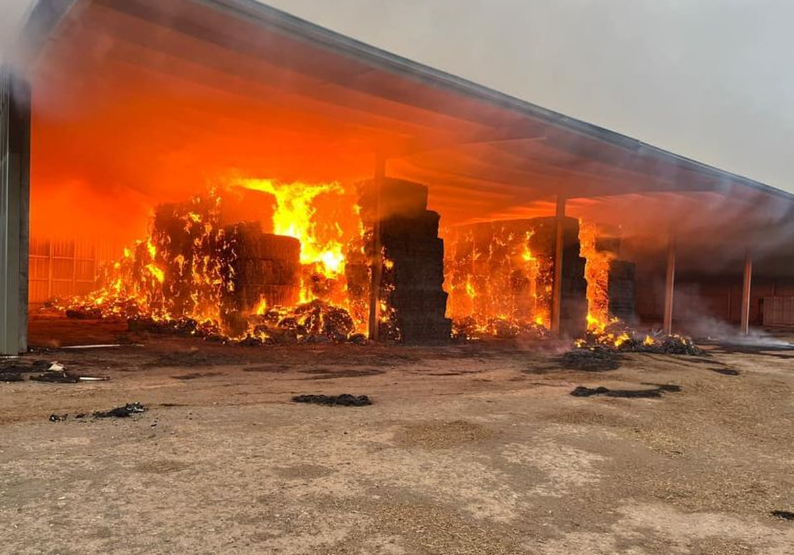 Rain-affected haystacks could increase the chance of spontaneous combustion
Rain-affected haystacks could increase the chance of spontaneous combustion
CFA is warning farmers of the dangers of rain affected haystacks after heavy rainfalls of 40 to 100mm were recently recorded across parts of the northwest.
With more rain forecast this weekend, the combination of rushed baling and rain-affected haystacks could significantly increase the likelihood of spontaneous combustion as moisture levels rise within stored hay.
Between June 30, 2023, and July 1, 2024, CFA responded to 121 haystack fires across regional Victoria, with 66 per cent of incidents occurring in the west and northwest of the state.
CFA District 18 Assistant Chief Fire Officer Gavin Wright emphasised the risks tied to recent weather conditions and new haystacks across the district.
“Moisture in hay bales can quickly lead to heating, especially if baling was rushed or done under less-than-ideal conditions,” Gavin said.
“Farmers need to be extra careful with their timing and monitoring.”
Gavin advised that checking haystacks regularly is critical to preventing fires.
"If you notice anything unusual, like a strange smell or rising heat, investigate immediately.
“Use a temperature probe to monitor conditions inside the stack and act early if you detect a problem," he said.
“Regular monitoring of your hay can make all the difference between a manageable issue and a devastating fire.
“Farmers must stay alert, especially with current conditions.”
For advice on haystack safety or to learn more about reducing fire risk on your property, visit CFA’s website or contact your local CFA brigade.
- Ensure hay is well cured before baling.
- Know the history of the hay you purchase.
- Keep haystacks to a limited size and separate your haystacks.
- Monitor moisture and temperature of your hay regularly.
- Watch for unusual odours such as pipe tobacco, caramel, burning or musty smells.
- Store hay in separate stacks or sheds away from farm equipment and other buildings.
- Keep your hay dry. Protect it from rain, leaking rooves or spouts, and runoff. Cover stacks with tarps or hay caps.
- Don't stack hay right to the top of a hay shed. Allow some air to circulate at the top - this helps to carry away moisture.
Temperature Guide (degree Celsius) – what to do when your hay is overheating
Use a thermometer in a probe or insert a crowbar into the middle of the stack for 2 hours.
- Less than 50 Can handle the crowbar without discomfort
Check temperature daily.
- 50 - 60 Can only handle crowbar for short time
Check temperature twice daily.
- 60 - 70 Can touch bar only briefly
Check temperature every 2 – 4 hours. Move hay to improve air flow.
- Over 70 Bar is too hot to hold
Potential for fire. Call 000 immediately. Avoid walking on top of haystack. At this stage pulling apart the hay may provide the oxygen it needs to ignite.
For more information, please visit here.